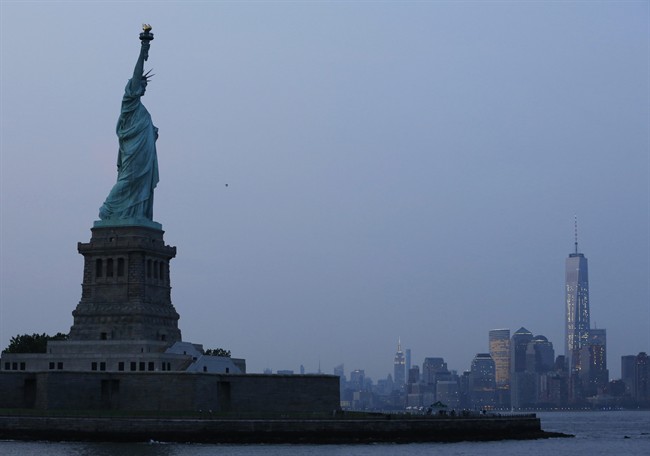CHICAGO – The richest Americans live at least 10 years longer on average than the poorest, but that gap isn’t as wide in many communities, especially affluent, highly educated cities, a major study found.

The research emphasizes that where you live and what you earn help determine life expectancy, along with changeable behaviours including smoking and lack of exercise.
Stanford University economist Raj Chetty and colleagues analyzed more than 1 billion tax records between 1999 and 2014, along with government records on nearly 7 million deaths. They used the data to estimate life expectancy at age 40 by income and geographic area.
READ MORE: Living in poverty in Winnipeg can lower life expectancy by 19 years: report
Their analysis was published online Monday in the Journal of the American Medical Association. It comes during an election season marked by heated debate about income equality and the endangered middle class.
The report examines the well-known connection between income and longevity, but with more precision and detail than previous research, Princeton University economist Angus Deaton said in a journal editorial.
“The infamous 1 per cent is not only richer, but much healthier,” Deaton said.
READ MORE: Report shows life-expectancy gap between high and lowest income is almost 20 years
KEY FINDINGS
Men with the top 1 per cent in income lived 15 years longer than men with the lowest 1 per cent in income; for women that gap was 10 years.
Between 2001 and 2014, life expectancy didn’t change for people in the lowest 5 per cent of income, but it increased by about 3 years for men and women in the top 5 per cent. Those changes, and life expectancy in general, varied substantially by region.
The poorest Americans lived the longest in areas where smoking, obesity and inactivity were scarce, and access to medical care had less influence than previous studies have suggested.
READ MORE: Inuit life expectancy trails rest of Canada
The study did not include people with no income.
LOCATION, LOCATION, LOCATION
Data from Dallas, Detroit and New York help illustrate the findings. Among the lowest-income men and women, life expectancy was lowest in Detroit and Dallas and highest in New York. Among men at the lowest income level, life expectancy was 72 in Detroit, but almost 80 years in New York — a nearly seven-year difference. Among men at the top income level, it was about 86 years in Detroit and 87 years in New York, a difference of just one year. The gap was smaller among women.
The lowest life expectancies for the poorest men and women — less than 78 years — were in Indiana, Nevada and Oklahoma. For the richest, the lowest life expectancies — less than about 85 years — were in Hawaii, Nevada and Oklahoma.
READ MORE:Death by postal code: Income still dictates lifespan in Ontario
THE IMPLICATIONS
The poorest Americans fared best in affluent cities with highly educated populations. These tend to be areas with health-related public policies including smoking bans and high levels of funding for public services, the researchers said.
The findings raise the possibility that community-based public health approaches could help address the income-based longevity gap, a journal commentary said.
- Naloxone-resistant street drug linked to 9 deaths in Eastern Canada seized in Alberta
- ‘She gets to be 10’: Ontario child’s heart donated to girl the same age
- Buzz kill? Gen Z less interested in coffee than older Canadians, survey shows
- Bird flu risk to humans an ‘enormous concern,’ WHO says. Here’s what to know



Comments